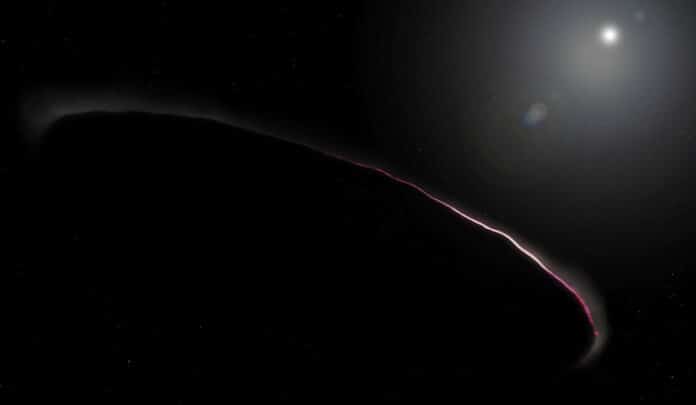In 2017, a mysterious interstellar object was detected passing through our Solar System. Since then, the potential for interstellar objects to pass through the solar system regularly has come to experts’ attention.
For our subsequent close encounter with a roving interstellar object, a study team led by a Yale astronomer has some recommendations. Check its X-rays on the way out. According to scientists, X-rays might be the key to understanding interstellar objects.
When an object similar to ‘Oumuamua passes in front of us once more, X-ray telescopes will be crucial. If we detect X-rays, a cloud of gas surrounds the thing, and sublimation drives the unusual acceleration. If X-rays are not visible, then different laws of physics are at work.
The solar wind, which causes the Aurora Borealis on Earth, is central to the hypothesis. A fast-moving stream of ionized particles is the “wind.” When these ions come into contact with an excellent gas, they steal electrons, and as the energy of the electrons cascades down, they release X-rays and UV photons.
Crucially, this process happens with many types of gases, even ones that are invisible in the optical or infrared.
Q. Daniel Wang, an X-ray astronomer and professor at the University of Massachusetts, Amherst, and co-author of the study, said, “Typically, X-rays provide diagnostics of the most extreme environments, like hot gas around black holes. But they can also probe planets and potentially interstellar objects.”
X-rays are produced by comets and planets like Venus, Mars, and Jupiter when the solar wind slams against their atmospheres rather than directly by these objects.
By using newly built devices to observe new interstellar objects, Cabot and his co-authors hope to put their idea to the test.
Study co-author Darryl Seligman, a former Yale Ph.D. student who is a research fellow at Cornell University, said, “The forthcoming Rubin Observatory Legacy Survey of Space and Time (LSST) will give us an unprecedented increase in sensitivity to detecting these transient objects, offering us orders of magnitude increase in sensitivity and almost nightly coverage of the entire southern hemisphere. We have estimated that the LSST will identify a handful of interstellar interlopers yearly.”
The study has been accepted by the Astrophysical Journal.
